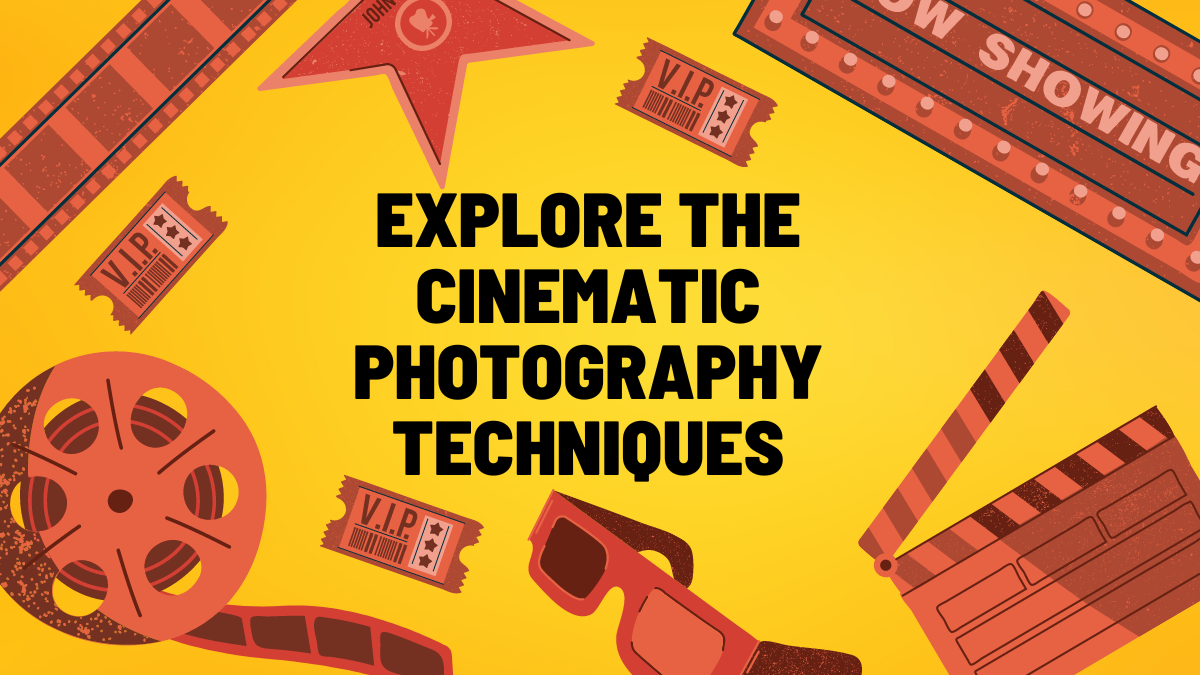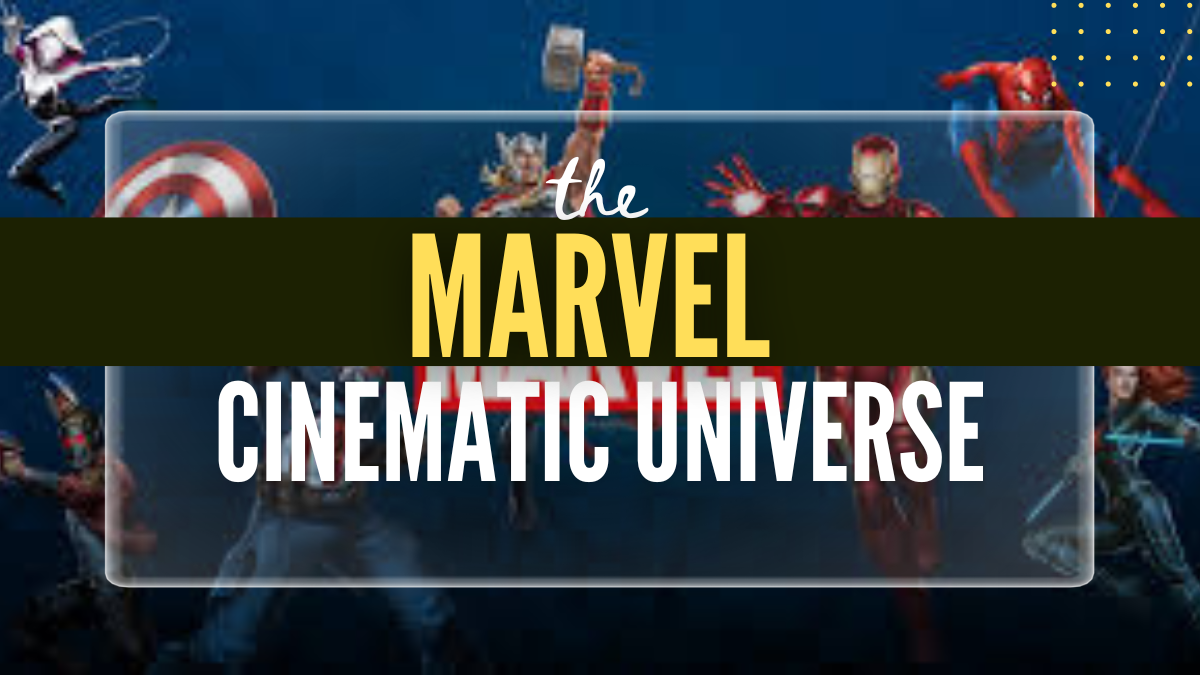
Cinematic Photography Techniques are essentially the art of still photography with the intent of capturing the scenes in a way reminiscent of movie scenes. Using the strategies from film photography, photographers can be able to capture a picture that appears like a shot from a film with tones of emotion, depth, and a story. Check out the main strategies to obtain cinematic look in your photos below.
Table of Contents
1. Mastering Composition
Composition plays a very crucial role in capturing pictures in Cinematic Photography Techniques. it helps the eye of the view and create the mood of the scene. There are literally hundreds of compositional guidelines, but among them one of the most effective is the rule of thirds which is the separation of the frame into nine equal parts using two horizontal and two vertical lines. By placing some elements along these lines or at the intersection of these lines, one can arrange the image so that the composition is balanced at the same time when it would have a dynamic feeling just like a cinematographer sets up the frame to lead the viewers’ attention.
The other important method is the application of the so-called leading lines. These are visible on the image lines that are either formed naturally or designed by humans which lead one’s focus to the subject or further into the background. Levitating lines assist the development of the illusion of depth and to give direction to the viewer about the narration of a particular scene contained within the depicted shot.
2. Utilizing Lighting for Mood
Lighting, in my opinion, is one of the strongest and the most versatile means in Cinematic Photography Techniques. The nature of lighting tremendously influences the outlook of a scene in addition to the feeling that a scene creates. Natural light can give a soft natural look which is realistic while artificial light can be adjusted in a way that contrasts with the scene and brings out the natural beauty of the scene by bringing out its high points.
Some of them are borrowed from films including the low-key lighting where the scene is lit using a single source of light and this creates a kind of shadowy effect. On the other hand, high key illumination gives a happy and pro-active tone to an image having small quantity of shadow best used in scenes such as joy and serenity.
3. Color Grading and Tone
Creating ambiance is a major function of using colours in shooting a photograph to be used in a movie. Color grading is the process of changing colour within an image to achieve a desired aesthetic that enhances the look and feel of the image in the same way that enhancement in films. Pale shades of red, orange and yellow are warm colours and produce feelings of warmth or reminiscence while blue and green produce cold feelings, loneliness or sadness.
Therefore, to come up with an excellent design, one has to consider the use of complementary or analogous color as they boost the aesthetic value of the work and are very useful in passing the intended emotion. For instance, teal and orange color, can be considered as a cinematic color scheme because the contrast of the warm skin tone against cool backdrops is visually appealing.
4. DoF stands for Depth of Field while Focus refers to the sharpness of image.
In Cinematic Photography Techniques, the shallow depth of the field is used to blur out the background and to focus the viewer’s attention to some elements. This is done in a way that impersonates how directors use focal length to control where the spectator directs his/her attention in a given scene. Due to this, for example, the photographer who made everyone blurry but the main character can show intimacy or the character’s state of mind.
On the other hand, a shallow depth of field will focus less of the scene and is perfect for wide shots to set a scene or scenes that are all important in the storyline.
5. Storytelling Through Imagery
In particular, it reflects the principles of cinematography, which is mainly focused on conveying a story. Not one pixel of the picture within the frame should be arbitrary or merely aesthetically pleasing; the sets, subject’s emotions, play of light and shade and other elements should be designed to portray the theme. Through, these constituents a photographer is in a position to imagine and compose the images in a manner that assemble a story; similar to a filmmaker being capable of picturing a story through a single frame.
Altogether, Cinematic Photography Techniques are a new kind of art that unites the cinematographic language and the essence of the photograph. On one hand, achieving control over composition, lighting, color, depth of field and composition, photographers can achieve the same result as the cinematic motion picture.
The History of Cinematic Photography Techniques
Cinematic photography, a technique of taking photograph in a manner that resembles filmic interphase has been around since the early years of photography and has documented the development of both cinema and photograph. The evolution of these techniques is related to the advancement of technology and arts in the past century in computer graphics as well as in animation.
1. Early Beginnings: THE INFLUENCE OF SILENT CINEMA
The roots of the Cinematic Photography Techniques can be traced back to the silent film era of late seventy’s to early nineties of the nineteenth century. These directors including Georges Méliès and D. W. Griffith started developing their ideas on composition, lightings, and frame to create a story out of moving verses out of noise. It is rather important to emphasize that these early films played a vital role in shaping photographers’ works as many of them started applying the similar techniques to their projects. Such elements as the high contrast of light and darks and bold composition being characteristic of silent films was thus the precursor to setting up of photography as a style in the cinematic defined context.
2. The Experience of Hollywood and the Emergence of the Style in Cinema
The period between the years 1920-1950 is commonly known as the Hollywood’s Golden Age period where cinematic strategies that are currently used in photo session was developed. While the modern day cinematic greats such as Hitchcock and Welles mastered the use of shadow, light and camera positioning to enhance suspense and drama . ”mise-en-scène”, which means how every object that is to be seen is placed in relation to the camera became one of the principal elements of the cinematographic language.
Designers of the time of the movie, as, for instance, Edward Steichen and Clarence Bull, were eager followers of the langue of Hollywood. They also started applying the same approaches in their portrait photography especially in celebrity portraits which was meant to depict the elegance and the allure of the Hollywood movies.
3. Here the author examines the results based on the film noir criticism.
The film noir style emerged in the 1940-50s and soon became famous by its dark and shadowy look; thus, influencing the cinematography as well. These films were also notorious for their high use of light and dark contrasts which is largely known as low-key lighting. It was ideal for setting rhetoric of mystery, tension and of course, the danger and mystery of the shark. These techniques were adopted by photographers in order to capture images that were as moody and reflective of character as this series is, and most of the imagery selected by the photographers was based on urban settings.
4. The New Wave and Beyond: Critique: Experimentation and Innovation
The so called New Wave movements began in the 1960s and the 1970s in France and other countries; directors Jean-Luc Godard and François Truffaut among others were rejecting tradition cinema practices in order to find new ways to address audiences. They began to introduce new ideas in the composition of paintings, light effects and there was increased emphasis on realism. These aspects started being incorporated in the cinematic photography at this period, photographers shifted from fixed studio like settings which were common in earlier era.
5. Cinematic Photography Techniques in the Digital Era
This is specifically so since digital photography and image manipulation platforms became normative in the course of the 1980s and 1990s up to the present century. In the current world, photographers can make adjustments to color, contrast, and lighting of their images in order to make a cinematic look. Georgia Zemtsova brings together contemporary photographers who seek to make provocative and narrative images as the heirs of today’s pioneer directors, such as Christopher Nolan and Wes Anderson, who has his unique visual language.
The Future of Cinematic Photography Techniques
Cinematic Photography Techniques with its extended extensiveness, complex and dramatic form of narrative and the possibilities of giving vent to emotions through lighting and framing has been a link that unites the sphere of cinema and photography for long. The future trends associated with the development of technology in the field of artistic trends will definitely give fresh and exciting ideas to the future trends of cinematic photography techniques. Here’s what should be expected in future.
1. Artificial Intelligence and Machine Learning: The New Future
Cinematography is set for a radical change by one of its two major subfields, that is, artificial intelligence (AI) and machine learning. People are also employing AI for post-production functions in the digital video creation process these include color grading, lighting, and composition to mention but a few. In future, these technologies can facilitate photographers to mimic different cinematic styles on the new shoot, replicating the experience of specific directors or various film genres perfectly.
Artificial intelligence could also process large volumes of images to uncover trends that could in turn assist photographers to forecast and capture images that are appealing to the modern society. This could give birth to a new sort of cinematic photography where the techniques would suit the needed and the perceived feelings of viewing by individuals.
2. Virtual and Augmented Reality
It shows that with the introduction of virtual reality (VR) and augmented reality (AR) cinematic photography is now taking new frontiers. Another creative opportunity of VR is related to the ability to shoot the scene and then the viewer gets a unique chance, in fact, to float in the created environment, and not only to watch it, thus, defining the border between photography and cinema. This makes story more interesting and immersed kind of way.
AR, in contrast, can be employed to add movie-like effects on real scenarios and thus allow photographers to complement their endowments with active, multi-layered attributes. For instance, in still image, AR may be applied to put more effects on the picture, extra lighting or some moving parts to the still picture converting more or less a piece of art.
3. Application of Three Dimensional and Holographic Endoscopy
It will probably be expected that the world of cinematic photography will embrace and integrate into 3D and holography. Such technologies will continue to advance hence enabling photographer to design images of better quality and realism. 3D photography can make even a still image to look deeper and have a great depth that can only be seen in films and it opens up great opportunities in producing spectacular scenes.
Holography could go one step farther and allow for the creation of images which may be outlined and viewed from all angles, virtually as if they were scenes of a movie appearing in real space. This could potentially result in the creation of photographic exhibitions and photographic display which give the viewers of photographs a more interactive travel experience.
4. Sustainability and Ethical Considerations
Therefore sustainability and ethical dimensions shall remain critical to the future direction of cinematic photography as the profession advances. The extent of the consequences of photographers’ responsibility toward the environment varies, including travel emissions and the energy expenditures of equipment. Some changes are expected in the future for example switching to low energy consuming lights and replacing physical sets with virtual ones.
From an ethical point of view, AI and deepfake technology question the concept of a referent and informed consent in cinematic photography. It is going to be incumbent upon future photographers to steer past such impediments while encouraging the development of creative ideas that will uphold the dignity of the subjects as well as obliged the viewers.
The Impact of Cinematic Photography Techniques
Cinematic Photography Techniques are an amalgamation of art and skill which owes its inspiration from cinematic art very much to create visual images which have high emotional appeal and great aesthetic sense. It’s not merely a question of aesthetics but of context and relevance as those cinematic photography techniques alter not just the manner in which narratives are constructed, brands are conveyed, and memories are captured. The following brief review aims at providing a more detailed overview of the effects of these techniques in the broad sense as well as to emphasize the multifaceted nature of these processes.
1. Elevating Visual Storytelling
Through cinematic photography techniques, narrative is made more prominent and plays a very crucial role. With the help of bright lighting, pre-recreation of scenes, and post-production color correction, photographers are able to capture hearts of the viewers. Contrary to portraying items/subjects, these are images that direct ideas, emotions, and make suggestions that trigger a story in the minds of the viewer.
For example, the dim lighting in a scene gives a suspense feeling to the audience or the lens used to give a feeling of open space or loneliness to the character. These techniques enable photographers to convey extensive narrative within a single frame and therefore cinematic photography is a great resource for scripts based photographs in art, business and even journalistic photographer.
2. The latter will inevitably affect branding and advertising, with the Bosporus region leaning towards the use of social media as a means of marketing.
Cinematography has played a very crucial role in the branding and advertising of products. Cinematic techniques are expressive and make brands appeal to the emotions of people and this is why brands try to employ the use of cinematic techniques. Through the use of pictures that simulate scenes from movies, the brands’ message is more easily understood and closer to real life.
For instance, when a product is shot and well lit and posed to mimic a film still, it tends to give consumers an idea about the type of life they want to lead with the product. This strategy is best illustrated in the fashion and luxury products where the aim is to make the consumer feel that he/she wants to be associated with the product. Brands attempt to achieve unique image that can be the result of setting up a specific cinematographic language, which allows to make the campaigns more impactful.
3. Shaping Cultural Perception
The culture has also been influenced by cinematic photography techniques as far as the perception and expectation of people concerning images in media are concerned. Nostalgic and always accentuated, and, often, monumental, the cinematic photography alters the very perception of the world and its reality in the human eyes. This is well illustrated in the scenes on celebrities where actors are depicted while shooting in a manner that is unrealistic although this is an actual representation of the celebrities.
However, thanks to the usage of these techniques in the media that can be considered as popular, ordinary people have been affected by them. Since people tend to develop certain habits in terms of expectation from cinematics, their expectations from other visually appealing content such as photography are also bouyed by the same expectation for a luxurious look and finish as well as sophisticated narrative. This has put pressure on photographers of all disciplines to get more creative with the work that they are producing.
4. Developing and Improving the Art of Personal and Documentary Photography
Other trends that has also changed personal and documentary photography includes cinematic photography techniques. These techniques, if employed then photographers can infuse a touch of creativity and touching value to what would otherwise just be regular photographs of life. This is very much notable in occasions like wedding and portraits whereby the intention of the photographer is to capture a particular emotion.
Visit Website Blog :- Click Here
Also Visit :- Telegram
Documentary photographic storytelling is, therefore, not very different from movie storytelling whereby cinematic approaches are employed in building the mood and storyline of a story. For instance, selective focus or high contrast will direct the viewers’ attention to specific items featured in the shot since they are significant to the overall context of a movie. It aids in developing a more engrossing audience experience of the video which is the power behind this move.




